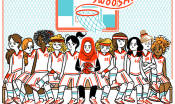article
Bias Makes LGBT Equality Tough to Teach
Twenty-eight teachers in my master’s level class silently moved en masse to the right side of the room to signify that they would teach the civil rights movement to their elementary students. In fact, most considered it negligent to ignore this historic movement that brought about the end of segregation in our country.





